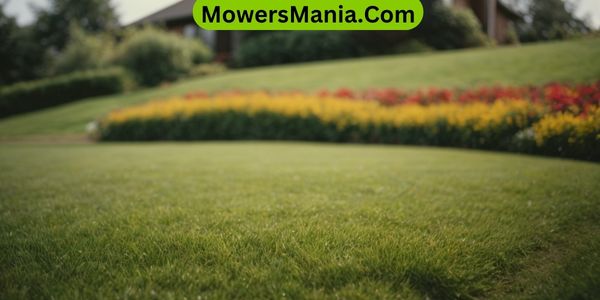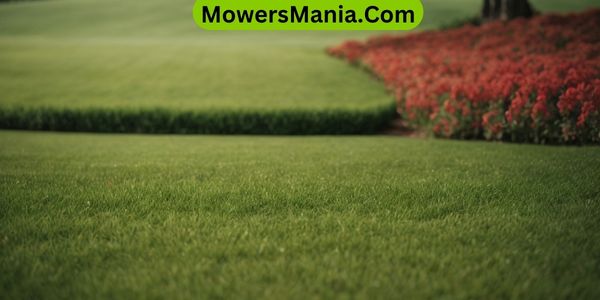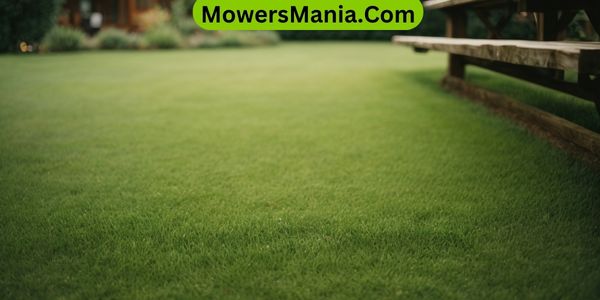Looking to improve your lawn’s health? Wondering what’s the best top dressing for a lush, green yard?
This article will guide you through the benefits of top dressing, different materials to consider, and key factors to keep in mind when choosing the right top dressing for your lawn.

Get ready to learn the best practices and application tips for a thriving, beautiful lawn.
Benefits of Top Dressing
The best top dressing for a lawn offers several benefits that can improve the overall health and appearance of your grass. By applying a top dressing, you can effectively level out any uneven areas on your lawn, creating a smooth and uniform surface.
This process also helps to promote healthy root growth, as it provides a nourishing environment for the grassroots. Additionally, top dressing aids in enhancing the soil structure, leading to better water retention and improved nutrient absorption for your grass.
Furthermore, top dressing plays a crucial role in controlling thatch buildup, which can hinder the health of your lawn if left unaddressed. By incorporating organic matter into the thatch layer, the top dressing encourages decomposition, preventing excessive thatch accumulation.
This, in turn, fosters a thriving microbial population in the soil, contributing to a more balanced and sustainable lawn ecosystem.
Moreover, the application of top dressing can significantly enhance the overall aesthetic appeal of your lawn. It helps to fill in any sparse areas and encourages a denser, lusher grass growth, resulting in a more vibrant and attractive lawn.
By choosing the right top dressing for your specific lawn needs, you can enjoy these benefits and achieve a healthier, more visually appealing grassy expanse.
Types of Top Dressing Materials
To select the most suitable top dressing material for your lawn, consider the various options available based on your specific grass and soil requirements. Different top dressing materials offer unique benefits for your lawn, so it’s essential to choose the right one.
Here are some common types of top dressing materials:
| Material | Description | Best For |
|---|---|---|
| Compost | Organic matter that enriches the soil | Improving soil structure |
| Sand | Improves drainage and prevents thatch | Enhancing soil aeration |
| Topsoil Mix | Blend of soil, compost, and sand | Promoting overall lawn health |
Each material has its own advantages, so consider the specific needs of your lawn when making a selection. Whether you want to improve soil structure, enhance drainage, or promote overall lawn health, there’s a top dressing material that’s right for you.
Keep in mind that the best material for your lawn will depend on factors such as grass type, soil composition, and your lawn’s specific needs.
Factors to Consider When Choosing Top Dressing

Consider specific factors when choosing top dressing material for your lawn to ensure optimal benefits for your grass and soil.
The right top dressing can make a significant difference in the health and appearance of your lawn.
Here are three essential factors to take into account:
- Soil Composition: Assess the composition of your soil before selecting a top dressing material. Different soils have varying drainage and nutrient retention capabilities. For example, sandy soil may require a finer top dressing to improve water retention, while clay soil might benefit from a coarser material to enhance aeration.
- Grass Type: Consider the type of grass in your lawn when choosing a top dressing. Some grass varieties may thrive with a lighter, sand-based top dressing, while others may require a heavier, loam-based material. Matching the top dressing to your grass type can promote better root development and overall health.
- Nutrient Content: Evaluate the nutrient content of the top dressing material. Look for a blend that provides essential nutrients like nitrogen, phosphorus, and potassium to support the growth and vitality of your grass. A nutrient-rich top dressing can contribute to a lush, green lawn with improved resilience against stressors.
Best Top Dressing Practices
When applying top dressing to your lawn, ensure even distribution across the entire surface to achieve optimal results.
Start by mowing the grass to a height of about 1 inch to allow the top dressing to reach the soil easily. It’s important to fill any low spots with soil before top dressing to create a level surface.
Use a spreader or shovel to evenly distribute the top dressing material, whether it’s compost, sand, or a mix of materials. Aim for a layer that’s about ¼ to ½ inch thick.
After spreading the top dressing, gently rake it into the grass to ensure good soil contact. Water the lawn thoroughly to help the top dressing settle and adhere to the soil. Avoid covering the grass excessively, as this can suffocate the lawn.
It’s best to top dress your lawn during the growing season, as the grass will be able to recover quickly.
Repeat the process annually to improve soil quality, promote healthy grass growth, and maintain a lush, vibrant lawn.
Top Dressing Application Tips

For an effective top dressing application, evenly distribute the material using a spreader or shovel to achieve a layer thickness of about ¼ to ½ inch. This ensures that the lawn receives the benefits of the top dressing without smothering the grass.
Here are some tips to help you achieve the best results:
- Timing is crucial: Apply top dressing when the grass is actively growing to allow it to recover quickly. Avoid applying it during extreme heat or drought conditions, as this can stress the grass.
- Prepare the lawn: Before applying the top dressing, mow the grass to a shorter length than usual to allow the material to reach the soil more effectively. It’s also important to aerate the lawn to improve soil penetration and reduce compaction.
- Watering and maintenance: After applying the top dressing, water the lawn thoroughly to help the material settle and make good contact with the soil. Continue regular lawn maintenance to promote healthy growth and allow the top dressing to integrate effectively.
Following these tips will help you achieve a successful top dressing application and promote a healthy, lush lawn.
Frequently Asked Questions (FAQs)
How Often Should Top Dressing Be Applied to a Lawn?
You should apply top dressing to your lawn every 1-3 years, depending on the condition of your grass. Regular application can improve soil quality, reduce thatch buildup, and promote healthy grass growth.
Can Top Dressing Be Used on All Types of Grass?
Yes, top dressing can be used on all types of grass. It helps improve soil structure, reduce thatch, and promote healthy root growth. Applying it once or twice a year can benefit your lawn.
Is Top Dressing Suitable for Newly Seeded or Sodded Lawns?
Yes, top dressing is suitable for newly seeded or sodded lawns. It helps improve soil quality, aids in seed germination, and promotes healthy turf growth. Ensure the top dressing is evenly spread and not too thick to avoid suffocating the new grass.
What Is the Best Time of Year to Apply Top Dressing to a Lawn?
You should apply top dressing to your lawn in the early spring or fall. This helps improve soil quality and promote healthy grass growth. It’s best to avoid extreme weather conditions and do it when the grass is actively growing.
How Long Does It Typically Take to See Results After Applying Top Dressing to a Lawn?
After applying top dressing to your lawn, it typically takes a few weeks to see noticeable results. The new soil will gradually improve the health and appearance of your grass, leading to a lusher, greener lawn.
Conclusion
Now that you know the benefits of top dressing, the types of materials available, and what to consider when choosing the right top dressing for your lawn, you can confidently apply the best practices and tips for a healthy, lush lawn.
Remember to regularly top dress your lawn to improve soil structure, reduce thatch build-up, and promote healthy grass growth.
Your lawn will thank you for it!



